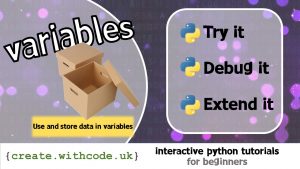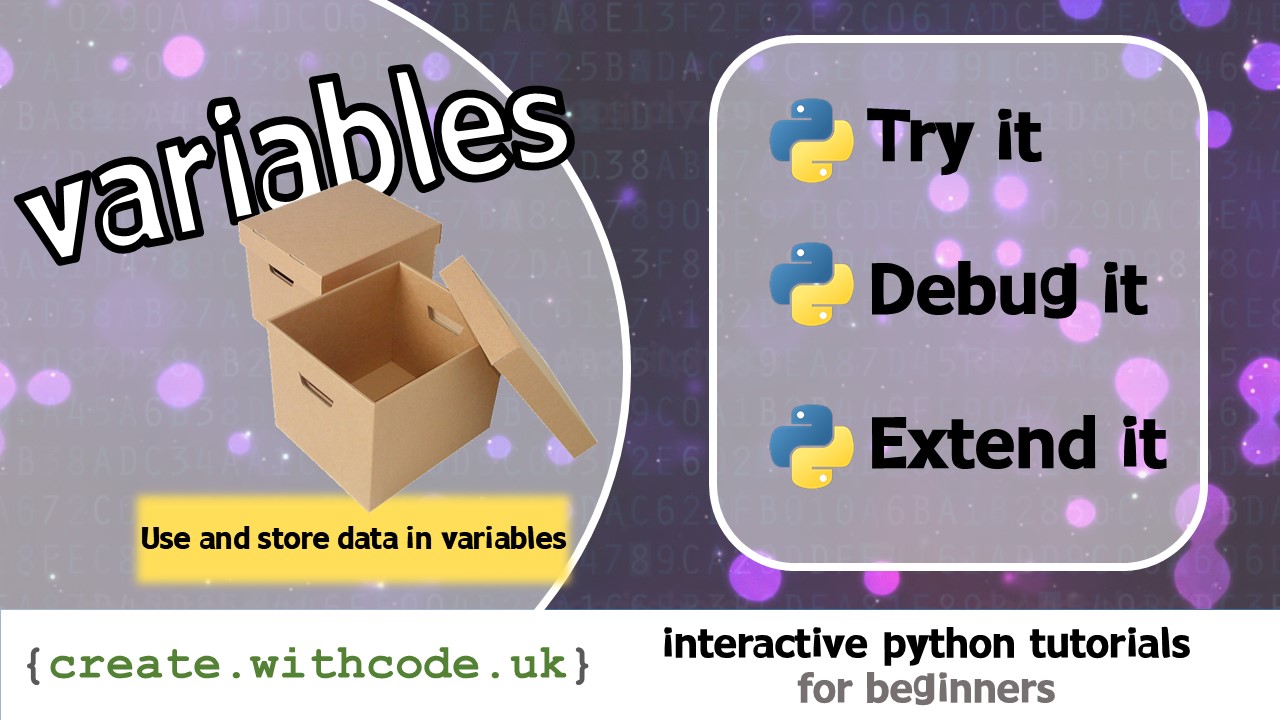The Theory:

Python Variables: Use and store data in variables
Computers can store and process loads of data.
Variables are like boxes that store some useful stuff.
Variables store data so that your program can use and process it.
Variables have a name and a value.
Variables store data that can change when the program runs
A variable name describes what the variable is used to store
The variable value is the actual data that is stored in the variable.
In python, you can assign a value to a variable using name = value
You can access the value stored in a variable just by using its name.
You can also use operators to do things like addition, subtraction, multiplication and division:
We’re going to learn how to write python code that will ask the user a question like we did in the input lesson but this time we’ll remember the answer into a variable.
Key point: Use variables to store data that your program needs to process.
Once you’ve got your head around variables, algebra in maths is dead easy: it’s the same idea of using letters instead of numbers.
On the next page you’ll get some code examples that you can try out for yourself.
Page 1: Intro
Page 2: The theory: learn what you need to know as fast as possible.
Page 3: Try it: try out and adapt some working python code snippets.
Page 4: Debug it: Learn how to find and fix common mistakes.
Page 5: Extend it: Choose a project idea to use your newfound python skills.











please check chalenge one :
print(“Hello ” + name + ” an!” )
(it still gives me an error!)
Replace the ” an!” with “!” and you should be OK 😀
need help with line 7 where do you put the second + food + ? in the line
Hello,
Try printing food + “? I love ” + food + “!”